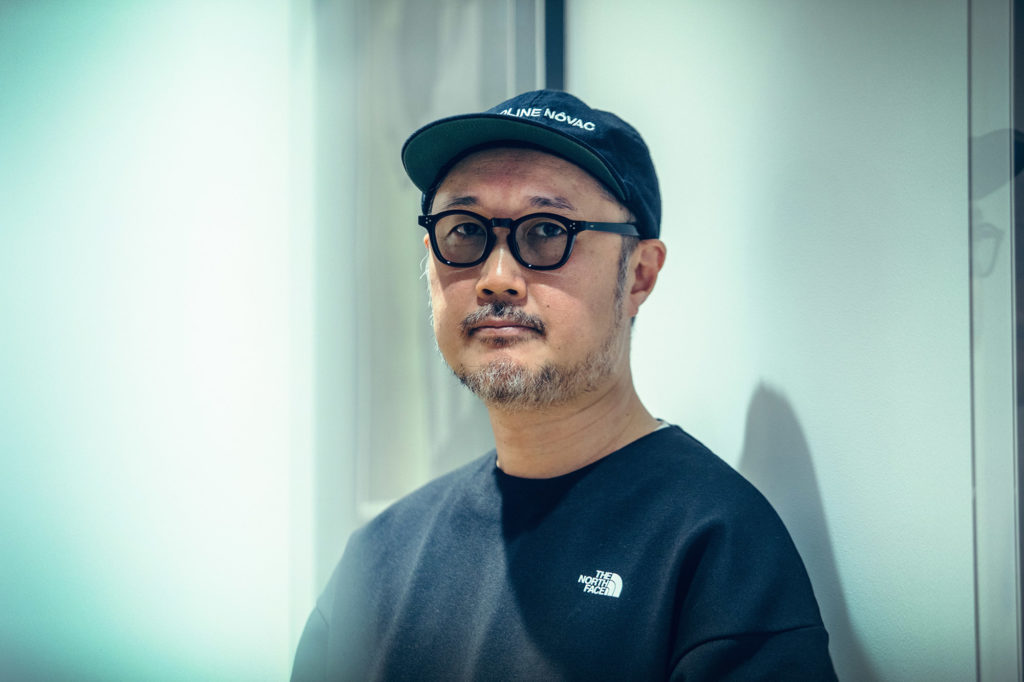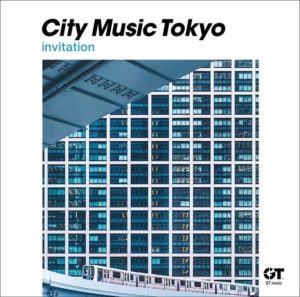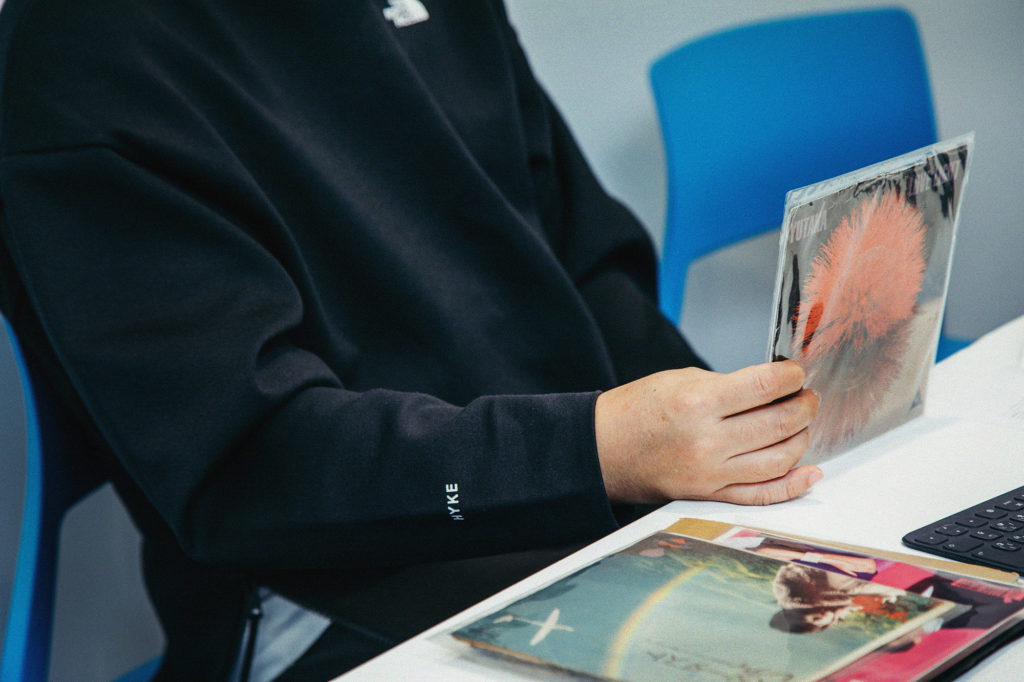City Pop has gained enthusiastic listeners across the globe. What is it about this Japanese genre that pulls so many people in? Where did it come from, and where is it going? We approached Cunimondo Takiguchi to break down City Pop’s allure, history, and future. City Music, which he released in 2003 through his solo project Ryusenkei, is an epoch-making album that belongs to a new wave of City Pop born in the 2000s. Since making his mark in the scene, he has continued to produce music as Ryusenkei and for others, and he also DJs and writes. One can say with certainty that Cunimondo Takiguchi is the person who laid the foundation for the popularity of City Pop.
In the first part of his two-part interview, we look at a compilation album he curated titled CITY MUSIC TOKYO invitation. Released in November, the album is a compilation of City Pop songs from the past. Plus, Cunimondo Takiguchi gets to the bottom of the fascinating history of the genre.

Opting for the term, City Music, to distinguish the genre from folky music
—The words City Music are in both CITY MUSIC TOKYO invitation, a compilation album you released in November, and your first album as Ryusenkei. Could you first explain your definition of City Music? Is it different from City Pop?
Cunimondo Takiguchi: I released my first album as Ryusenkei in 2003, but back then, people didn’t use the word City Pop the same way it is today. People used the term City Pop, but it referred to rock and folky artists and bands such as Happy End. I wanted to separate the music I made with that genre. The music I was making was closer to Tin Pan Alley than Happy End; I was striving to create a crossover sound. I thought people would picture folky music when they heard the term City Pop, so that’s why I used City Music instead.
—I didn’t know that was the difference between the two words.
Cunimondo Takiguchi: I should mention that I’m not the one who came up with City Music. In the late 70s, the term AOR (Adult-oriented rock) was born in the States, but until that point, people called music that was a bit more sophisticated than pop City Music. If I were to name an example that represents this sound well, it would be Jorge Calderon’s album City Music, released in 1975. I feel like that was the turning point. By the mid-70s, New York-based artists such as Laura Nyro, who were known for their warm and folky music, started to incorporate a more city-like, jazzy sound. I believe musicians like Haruomi Hosono and Tatsuro Yamashita caught wind of this change in sound in the States and formed Tin Pan Alley and Sugar Babe after being like, “We should do something similar in Japan.” I wanted to create music in this style, and so I titled Ryusenkei’s first album City Music.
—How did you come across this genre of music?
Cunimondo Takiguchi: Thanks to the influence of these college boys and girls that lived near my childhood home, I used to listen to Sugar Babe in elementary school. But I did like folk music more back then. I had a folk guitar and would practice playing arpeggio scales and whatnot. At that point, I still hadn’t made the connection between Sugar Babe and Tatsuro Yamashita. When I entered middle school, my friends began buying Tatsuro Yamashita’s album, For You, and that’s when I seriously got into his music. My parents bought me an electric guitar for my birthday during middle school, and I used to imitate Tatsuro Yamashita’s guitar strumming in “Sparkle,” which is a song from For You. I started listening to Tin Pan alley around then too.

—How did you get into Tatsuro Yamashita and Tin Pan Alley more than folk musicians?
Cunimondo Takiguchi: There’s a particular incident behind this. When I was in the 8th grade, one of the three close friends I had from track and field asked me, “Do you want to come to my uncle’s vacation home in Atami?” I went to stay there for about three, four days. When we got there, it started getting dark outside, and I went out to the balcony while listening to my Walkman. I watched the twinkling lights of hotels and other apartments and the taillights of cars passing by. And I felt an indescribable pang watching the view and listening to songs like “Futari” off of For You. It was as if I was the protagonist of a movie. I remember saying something like, “Look at us. We are so cool!” (laughs). If I were listening to folk music, I think the experience wouldn’t have been the same. Tatsuro Yamashita’s music at that moment had an immense effect on me emotionally. I had always liked music, but that was the first time I was convinced: “This is the type of sound I like.” You can say this is the origin story of me as a musician.
—Was most of the music you listened to on that point onwards City Music?
Cunimondo Takiguchi: When I was in a band in high school, I was into New Wave. We imitated bands like The Cure and Joy Division. But I never stopped loving Tatsuro Yamashita and would listen to him alongside New Wave music. After that, I got into The Jam and Paul Weller. At the time, Paul was creating soulful sounding music with The Style Council, and I also listened to Neo-Soul through that. I realized there was an affinity between soul music and City Music. My friends and I would talk about how Tatsuro Yamashita was making soul music.
Even after I reached my 20s, I continued to purchase contemporary Japanese pop CDs. By the time I started DJing, Japanese music had become a part of my identity, so I played a lot of that, which was rare back in my day. I’ve never felt like there was a disparity between foreign pop music and Japanese pop music. The only difference is the language. I thought, “Why not play Japanese tunes at the club?”
City Pop has never stopped; it has continued to exist
—CITY MUSIC TOKYO invitation is your first compilation album, in which you’ve sought after Japanese pop tracks from a City Music perspective. What is the concept behind this album?
Cunimondo Takiguchi: First off, I had the urge to include songs from the 90s. There are countless City Pop compilations and YouTube channels nowadays, where you can listen to City Pop from the 80s. But it’s hard to find ones in this style from the 90s. The 90s was the era of CDs, and there are some tracks that you can only find on 8cm CDs. Also, some are out of print, and many of the songs’ subscription contract hasn’t been terminated yet. I wanted to collect these rare gems.
Also, people usually generalize and sum up 90s pop as J-pop, but I think there were quite a few people still making City Music during that era. I feel like artists have continued making this sort of music nonstop since the 70s and 80s. I’m unsure if they thought of their music as City Music, but there were artists in the 90s that liked and incorporated soul music and AOR into their sound. It might sound surprising, but people like Kaori Okui (currently known as Kaori Kishitani) from Princess Princess, whose song is included in this compilation album, is one example.

—Shibuya-kei music was popular in the 90s as well.
Cunimondo Takiguchi: Yeah. I was talking about this the other day, but I think Pizzicato Five’s style is City Music, no doubt about it. It’s city-like and refined. I used to work as a jazz buyer at Tower Records at the beginning of the 90s, and acid jazz was an enormous hit then. I noticed some Japanese artists made pop music with acid jazz influences. I reckon it’s not a reach to call that sort of genre a branch of City Music.
—Recently, numerous people confidently state that there’s a City Pop revival. In your view, do you feel like this genre has continued to exist without it ever coming to a halt?
Cunimondo Takiguchi: Yes. Throughout different eras, there were a lot of styles we’ve come to call City Pop later on. For instance, contemporary pop acts like Sakanaction might be considered as City Pop in the future. Ultimately, it comes down to the way people interpret and think about music. When Toru Hashimoto put out his Free Soul compilation series, I bet there were soul music fans that were like, “What even is Free Soul?” Because Lou Reed was included in the series later on, perhaps some said things like, “This isn’t soul.” However, it’s important to note that the songs he compiled were “Free Soul” in his eyes; the compilations were cohesive because of his unique perspective and interpretation of this genre. The same could be said about CITY MUSIC TOKYO invitation, as this selection is my interpretation of City Music. I put the word invitation in the title because I want to make this into a series. CITY MUSIC TOKYO invitation is my invitation to the listener. My wish is to continue sharing my vision of City Music.
Cunimondo Takiguchi goes through the songs he selected for CITY MUSIC TOKYO invitation

1: EPO- “Ame No Kennel Dori”
This tune is a classic for me. I opened the album with this song because I wanted the listener to feel upbeat. I like how it’s almost like an homage to groups like Love Unlimited.
2: Rie Miyazawa- “Kokoro Kara Suki”
This track was the theme song for a TV series called Tokyo Elevator Girl, and I’ve always thought it was such a slick and stylish number. The acid jazz and ground beat elements are impactful and on par with music from abroad.
3: PLATINUM 900- “Apple”
I listened to “Apple” by chance back when I used to work for Tower Records, and I fell in love with it. The contrast between the Jamiroquai-like sound and cute vocals is nice. I was surprised to find out they released it through Air Records, the same label Tatsuro Yamashita was signed to.
4: Yurie Kokubu- “Easy Love”
Yurie Kokubu was highly acclaimed during City Pop’s most recent revival. Kazuko Kobayashi wrote this song, and the lyrics reflect the era and city life. It is just so lovely.
5: Cindy- “Watashitachi Wo Shinjite”
I took notice of Cindy because she sang backup vocals for Tatsuro Yamashita. This one wasn’t a single, but I liked it a lot. The clarinets and other city-like elements are appealing.
6: Kaori Okui (currently known as Kaori Kishitani)- “Anata Ga Soba Ni Iru Riyu”
When I listened to Princess Princess’ Kaori Okui, I had an inkling she liked AOR, and when her solo album came out, my gut was right. I bought this 8cm CD and listened to it when it came out.
7: Mikiko Noda- “Hana Wo Kau”
“Hana Wo Kau” is from the early 90s, and it has a Shibuya-kei sound to it. People are beginning to appreciate music like this once again these days. The second song off the same album is also good, but that one gets played in clubs, so I chose this one.
8: SECRET CRUISE- “Bitter Sweet”
One of the members of Shamrock made this. I don’t listen to The Shamrock because their sound is a bit too rock for my taste. But because Yuji Toriyama arranged this song, it has an acid jazzy sound and is easy on the ears.
9: PAZZ- “EMPTY HEART”
PAZZ’s vocalist is Miho Fujiwara, the singer from Chocolate Lips. “EMPTY HEART” is an homage to Ned Doheny, and that fact led me to pick it.
10: Chara- “Ano Tokei No Shita De”
It’s not a stretch to say this is my favorite song of hers. It’s similar to K COLLECTIVE’s sound. There’s a childlike innocence to Chara’s vocals, and it makes my heart skip a beat.
11: Pizzicato Five- “Top Secret”
This track belongs to their second album since the vocalist changed from Mamiko Sasaki to Takao Tajima. I selected this tune because I felt like the city-like vibe matches the compilation album’s theme. Their sound with Tajima-san as the vocalist has a strong City Music feel.
12: Masae Ono- “Sayonara No Fukei Genkyoku: INVITATIONS”
Ono-san used to sing for NHK’s children’s shows and sings jazz on the side. This song is originally Shakatak’s, and this version is brilliant. I like Ono-san’s sweet, sentimental voice.
13: Manna- “Horo Horo Zoshi”
Manna is someone who used to work with Haruomi Hosono-san on commercials. One of the members of Sadistics produced the album “Horo Horo Zoshi” is on. It’s so good I have nothing else to add. There are so many great tunes on that album.
14: KAORU- “Crystal Night”
I discovered KAORU through a compilation album called Loft Sessions, where she sang “Hoshi Kuzu.” This number is a crossover sound is memorable. You can hear the sound of a synthesizer called Solina in this track.
15: Rajie- “Last Chance”
“Last Chance” is a masterpiece. It sounds like it could be on one of the Free Soul compilations. Ryuichi Sakamoto plays the synth bass, and the arrangement is incredible. Yukihiro Takahashi produced this album, and it’s like an extension of Sadistics.
16: Mitsumi Hasegawa- “Stardust Lady”
I came across this track around a decade ago; a DJ played it during his set. It surprised me to discover Alfa Records released it. When I requested to use it, they permitted me, and this is the first time it has been released on CD. It has a mellow feel to it and is reminiscent of traditional Japanese folk music. But because it has strings in it, it has a wonderfully sparkly quality to it.
17: YUTAKA- “Love Light”
YUTAKA is a former member of NOVO, which was a band that played music influenced by Sergio Mendes. “Love Light” was the first song released through Alfa America, which was founded by Kunihiko Murai, the founder of Alfa Records. I chose this to be the closing track in hopes of City Music spreading more and more to the world.

Instagram:@cmd_tgc
Twitter:@cunimondo
Photograpy Ryosuke Kikuchi
Translation Lena Grace Suda

